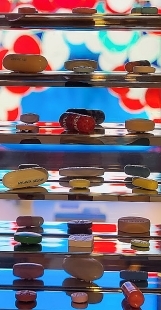Adam Yamey's Blog: YAMEY, page 13
June 2, 2025
A book about the Gujaratis by Salil Tripathi
WITH ABOUT SIX hundred and forty pages of text, this book published in 2024 covers a lot of ground. Much of what Tripathi writes about Gujarat and the Gujaratis is fascinating. However, the author’s definition of who is a Gujarati may differ from that of many others. His definition of a Gujarati is anyone whose mother tongue is Gujarati. Thus, he includes groups such as the Parsis, the Bohras, and the Khojas. None of those groups, all of whom have Gujarati as their mother tongue, would usually describe themselves as Gujaratis, even if they reside in Gujarat. Although Kachchhis generally speak Kachchhi amongst themselves, most speak Gujarati as well, but most of them would disagree with Tripathi’s calling them ‘Gujaratis’. By using his definition of a Gujarati, the author was able to include many people, who would not have described themselves as Gujarati, in his book.
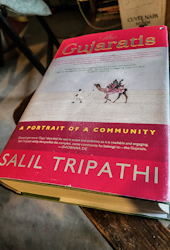
The book is a mine of information about people that the author describes as being Gujaratis. Much of this information is fascinating, but there were occasional passages that I felt should have been shortened or omitted. Although Tripathi deals a lot with some of the sadder aspects of life in Gujarat, he also injects humour into his text. However, he notes that Gujaratis are proud of Mahatma Gandhi, a Gujarati, but in recent years, they seem to be forgetting what he stood for.
I am glad that I read this book, but would advise those planning to read it that it is more of an encyclopaedia than a portrait of the Gujaratis. Tripathi covers a great deal, but I felt that at the end of it, my understanding of the soul of Gujarat and its people had only increased by a small amount.
June 1, 2025
An artist from Pakistan at an Indian art gallery in London
THE CHEMOULD ART Gallery was founded in Bombay (Mumbai) in 1963, and ever since then it has been an important player in India’s modern art world. Until 8 June 2025, it is holding a temporary exhibition at London’s Frieze at number 9 Cork Street. The exhibition is of works by Rashid Rana (born 1968).
Rana was born in Lahore (Pakistan), where he is currently the Dean of the School of Visual Arts and Design at BNU (Lahore). Apart from being an artist, he is also a curator and an educator. He is considered to be one of Pakistan’s most innovative artists.
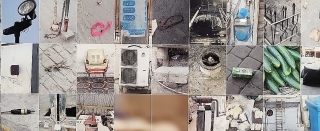
The exhibition in Cork Street includes 4 intriguing images. Each one consists of a mosaic of thousands of tiny photographic images, each one not much larger than a passport photograph. The photographs are not arranged randomly and subjects in neighbouring photographs seem to be unrelated to each other. They are put together in ways that when seen from a distance, form either large objects or abstract patterns. The resulting images are both fascinating and unusual.
Rana has exhibited in many parts of the world. These places are listed on the gallery’s handout and on the artist’s website. However, as far as I can determine, India is not one of these places. I wondered whether this related to the fact that an Indian gallery is displaying his works not in India but in London.
May 31, 2025
Recycling in nineteenth century Kolkata (Calcutta) and London
THE GWALIOR MONUMENT stands on the bank of the Hooghly River in Kolkata (Calcutta). The monument commemorates British officers and their men, who died in the Gwalior War of 1843. Constructed in 1847 by the then Governor General of India, Lord Ellenborough, its roof is made of metal.
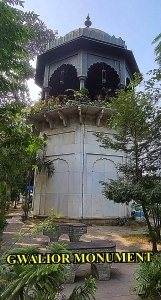
Several thousand miles away near London’s Hyde Park Corner and the towering Hilton hotel, there is a statue of the ancient hero Achilles. It commemorates the victories of Arthur Wellesley, 1st Duke of Wellington, and his men who helped achieve them. Standing on a granite plinth, Achilles is made of metal.
These two distantly spaced British memorials both contain metal in their construction. They have one more thing in common. The metal on the roof of the Gwalior Monument and that used to make Achilles is recycled. In each case, the metal was obtained by melting down the canons of the defeated armies. In the case of the Gwalior Monument, the metal was derived from the cannons of the defeated Marath army, and in the Achilles statue, it was derived from the enemy’s cannons captured at the battles of Salamanca, Vittoria, Toulouse, and Waterloo.
I wonder how the defeated armies would have felt if they had known that their weapons were being melted down to celebrate their opponents’ victories.
May 30, 2025
A circular staircase
May 29, 2025
Inspired by the Bauhaus in Cambridge
PORTUGAL PLACE IS a narrow winding lane that runs east from Bridge Street in Cambridge. It contains many picturesque old cottages and in the midst of them is one that looks as if its design was inspired by the Bauhaus school of design. Occupying numbers 5 to 7 Portugal Place it is a wonderful example of Modernist architecture.
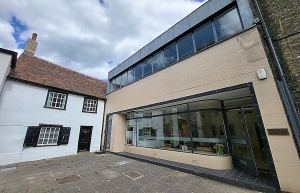
Until 1933, numbers 5, 6, and 7 Portugal Place were Victorian cottages. In 1933. The three cottages were sold by auction to Samuel Bostock. In 1935, the publisher Gordon Fraser (1911-1981) bought the properties, and demolished them. In their place, he had the present Modernist edifice constructed, which was completed by 1939. The new building served as a bookshop and a gallery for prints.
Today, this well-lit, spacious place is home to an art gallery called ArtSpace 5-7. It hs been in this Modernist building for at least 10 years. Although I have been visiting Cambridge regularly since the 1960s, I had never walked along Portugal Place until May 2025. Finding this elegant Modernist building in that tiny thoroughfare was a wonderful surprise.
May 28, 2025
Time pass and embroidery in a Tudor setting
THE ILL-FATED MARY Queen of Scots was kept prisoner by her relative Queen Elizabeth the First. Mary spent many years of her captivity under the supervision of the Earl of Shrewsbury, who was the fourth husband of Bess of Hardwick.
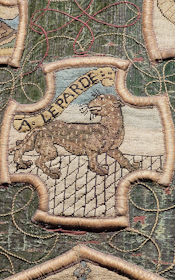
Between 1569 and 1584, Mary and Bess passed the time by working on embroideries, creating embroidered panels. Many of these bear depictions of animals copied from illustrations in a book by the Swiss naturalist Conrad Gessner and another by the Italian doctor and naturalist Pietro Andrea Mattioli. These books had been published a few year before 1569.
A woman who married a former owner of Oxburgh in Norfolk brought the embroidered panels to Oxburgh Hall, a moated Tudor edifice, in 1761 at the time of her marriage. It is not known how they had come into her possession. Now they are now on display to the public in Oxburgh Hall . These well-preserved beautiful embroideries are mounted on panels. They provide some evidence of how Mary spent some of her time in her years of captivity.
PS Mary was never held at Oxburgh.
May 27, 2025
A great gardener buried in Norfolk
KENWOOD HOUSE IN north London is a place I visit regularly, and have been doing so since the early 1960s. Its magnificent gardens were landscaped by Humphry Repton (1752-1818). Repton, who is considered successor to the great landscape designer Capability Brown was born in Suffolk. He died in Essex.
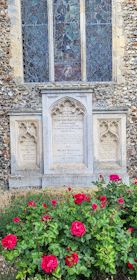
While visiting the small town of Aylsham in Norfolk, we came across the burial place of Humphry Repton. It is outside the southeast corner of the town’s large parish church.
Repton had many connections with Norfolk. His choice of Aylsham as his burial place was because his parents were buried in the church. We had stopped in Aylsham because it has an attractive market square. Until we visited the church we had no idea that the designer of the garden at Kenwood lies buried here.
May 26, 2025
Pigeon feed at a garden in Norfolk
PIGEON FEED IN A GARDEN IN NORFOLK
ALL OVER GUJARAT in western India, where many people are vegetarian, there are dovecotes in a wide range of designs and sizes. These shelters for the birds are to ensure their wellbeing.

In the walled garden at Felbrigg Hall in Norfolk, there is a dovecote, which was constructed in about 1745. Within it there are 968 recessed compartments, each of which is large enough for two dove’s nests. Cosy as this might sound, the dovecote was built for a reason that would upset vegetarians.
In the eighteenth century, fresh meat was in very short supply during the winter months. The doves, who nested in the dovecote in large numbers provided an endless source of fresh meat for the residents and their guests at Felbrigg Hall. And the birds’ droppings provided a source of nitrogen rich manure.
The dovecote at Felbrigg Hall was beautifully restored in 1923, and is well-maintained by the National Trust, which owns the property. White doves still make use of the dovecote, but, as far as I know, do not end up on people’s dinner plates.
May 25, 2025
Norfolk is a great distance from South Africa
WHEN I WAS LESS than 8 years old, my uncle and aunt took their young daughter and me to the Norfolk coast. We travelled there by car in their Citroën. All that I can remember of this holiday was that we stayed in a circular cottage wirth a conical thatched roof. It was like what in South Africa is called a ‘rondavel’.

The rondavel we stayed in was not in South Africa but at Winterton-on-Sea on the coast of Norfolk. The resort, which still exists and was fully booked when we paid a brief visit in May 2025, is called Hermanus is the name of a popular seaside resort on the south coast of the Cape Province of South Africa.
Although the Hermanus resort at Winterton-on-Sea changed hands about 50 years ago, its original owners were South Africans. And because my aunt was born in South Africa, it was likely that this resort in Norfolk was chosen for a short break because of its South African owners and the rondavels.


